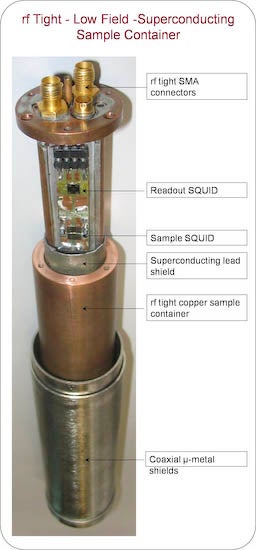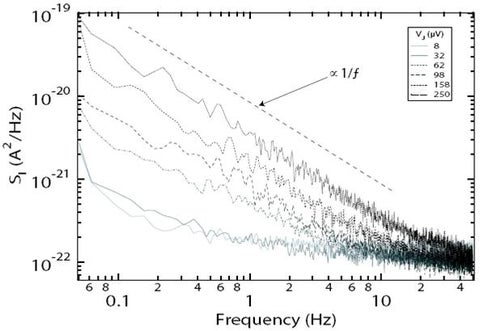Critical Current Fluctuations - 1/f Noise
There is a considerable resurgence of interest into understanding the mechanism and parameters affecting the 1/f noise phenomena in tunnel junctions. This resurgence is driven primarily by the prospect of using Josephson junctions as the most basic element for constructing a superconducting based quantum computer. A classical bit has two distinct states per bit, of either a 0 or a 1 and can only be one or the other at a time. A quantum bit or qubit, is also represented by a two level system, but differs from the classical bit, by behaving quantum mechanically which allows a system to be in a superposition of both states simultaneously.
The promise of quantum computing lies in the ability to efficiently factorize integers, which may lead to significant enhancement in the ability to perform quantum mechanical simulations important for advances in physics, chemistry, and biology. Currently, the most challenging obstacle in the development of a useable quantum computer is obtaining qubits with sufficiently long coherence times in order to perform operations. There is mounting evidence supporting the idea that individual charge fluctuators within the junctions lead to critical current fluctuations, which limit the qubit coherence times. A significant amount of work has been done towards understanding critical current fluctuations in superconducting tunnel junctions however all previous noise measurements of tunnel junctions have been conducted in the voltage state, where the junctions have been biased above the critical current and the corresponding critical current fluctuations have been measured. Flux qubit manipulations based on Josephson junctions however are performed in the zero voltage state. Until recently, the critical current fluctuations of Josephson junctions in the zero voltage state had not been measured.

Sample measurement cell

Sample data